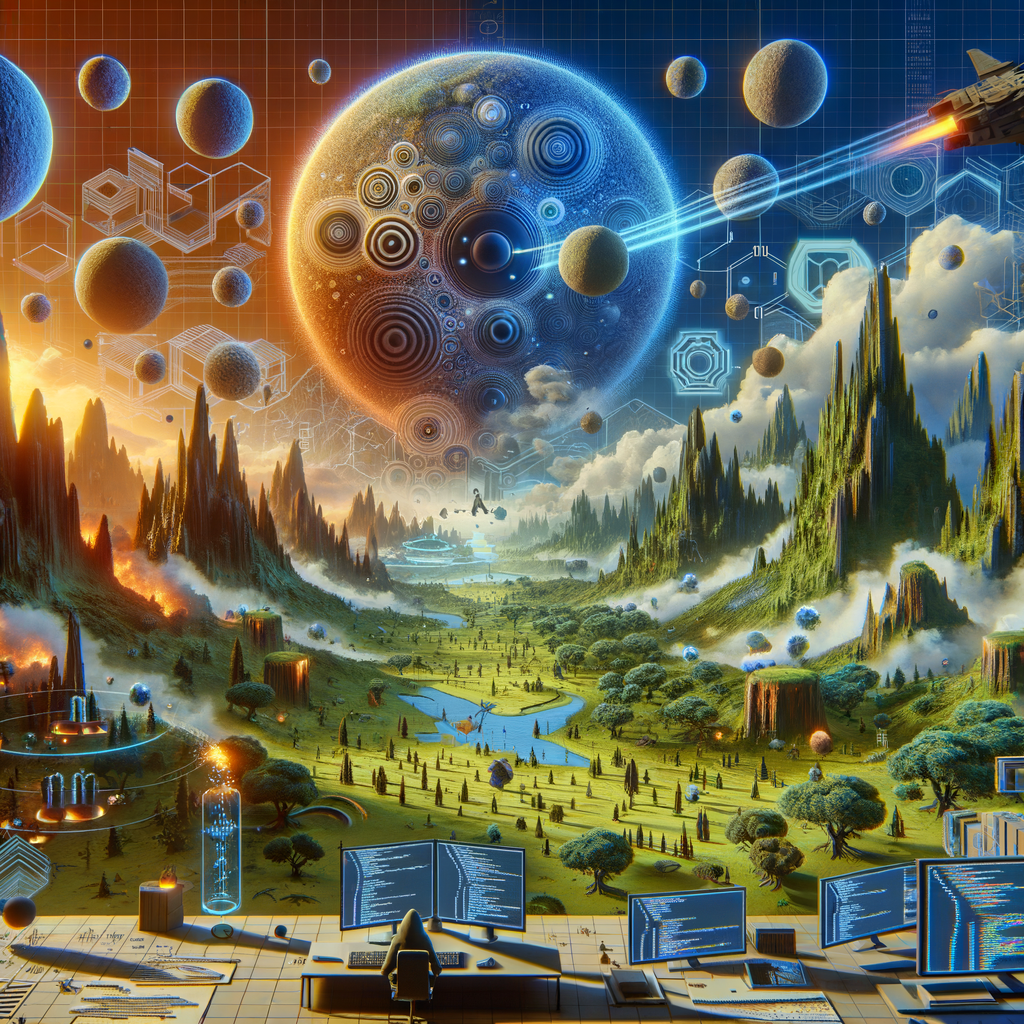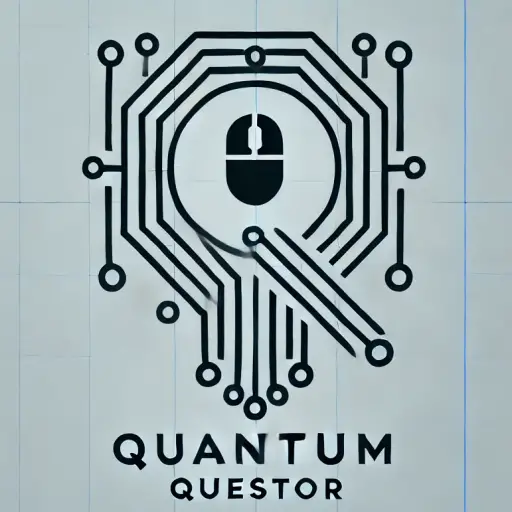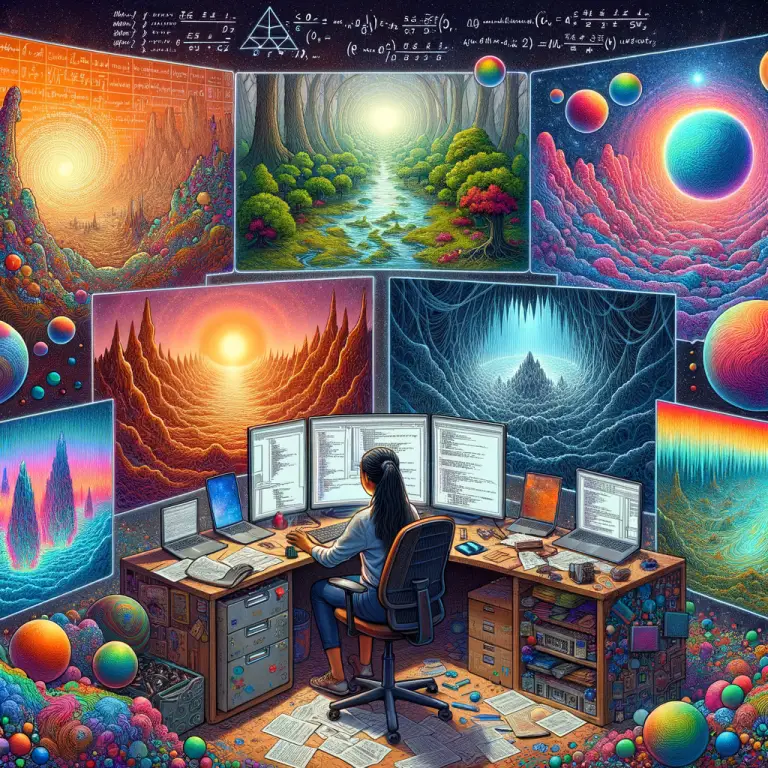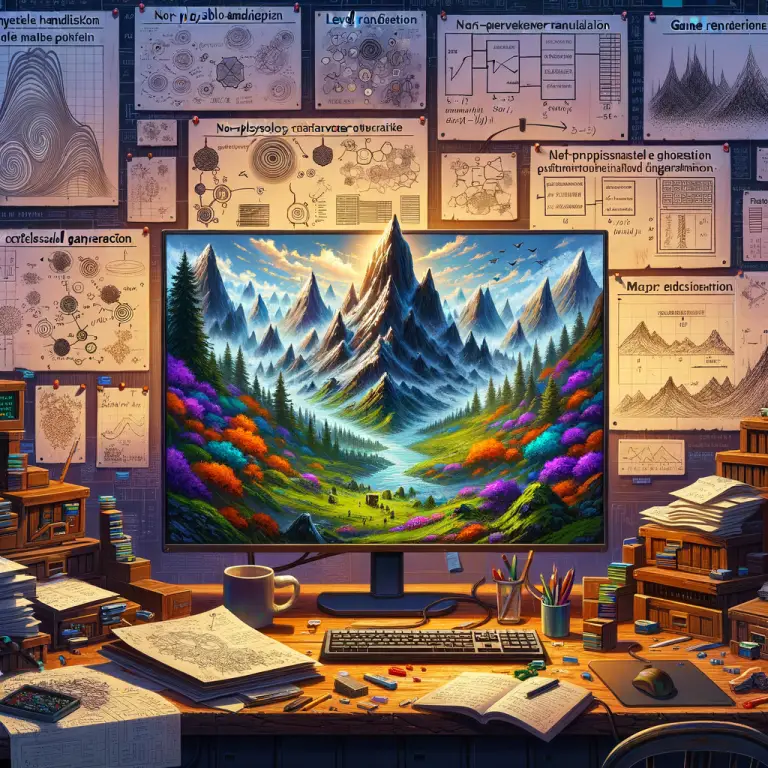
Introduction to Procedural Generation in Game Design
In the ever-evolving world of video games, procedural generation has emerged as a pivotal technique that reshapes how digital experiences are crafted. By leveraging algorithms to create vast and varied game worlds, procedural generation opens up new avenues for creativity and player engagement. This article delves into the intricacies of procedural generation in game design, examining its impact on industry innovation and player experience.
The concept of procedural generation isn’t new; it traces back to the early days of computer graphics and gaming. However, recent advancements in computational power and algorithmic complexity have catapulted its application to new heights. In essence, procedural generation allows developers to generate content dynamically, enabling infinite variations within a game environment. This means that every playthrough can offer a unique experience, which is particularly appealing for both developers aiming for longevity and players seeking endless exploration.
The Mechanics Behind Procedural Generation
At its core, procedural generation relies on algorithms to automate the creation of game elements such as landscapes, levels, characters, and even music. These algorithms use predefined rules and randomization to produce outputs that are both varied and coherent. For example, in a procedurally generated dungeon crawler, an algorithm might dictate the size and layout of rooms, the placement of enemies, and the distribution of treasure.
A common technique used in procedural generation is noise functions like Perlin noise or Simplex noise. These mathematical functions generate natural-looking textures and terrains by simulating randomness while maintaining a degree of continuity. Such techniques are crucial for creating believable environments that immerse players without feeling artificially constructed.
Procedural Content vs. Handcrafted Content
One of the central debates in game design revolves around the choice between procedural content and handcrafted content. Handcrafted levels are meticulously designed by artists and designers to ensure a curated experience. In contrast, procedural content offers scalability but may lack the fine-tuned detail of handcrafted work.
Nevertheless, many modern games employ a hybrid approach. Titles like “No Man’s Sky” utilize procedural generation extensively for planetary exploration but incorporate handcrafted narrative elements to provide structure and depth. This blend allows developers to harness the advantages of both methods – vast worlds and engaging storytelling.
The Advantages of Procedural Generation
The benefits of integrating procedural generation into game design extend beyond mere novelty. One significant advantage is replayability. With procedurally generated content, players encounter new challenges each time they engage with the game. This unpredictability keeps gameplay fresh and encourages longer engagement periods.
Another advantage is resource efficiency. Traditional game development often involves labor-intensive processes for creating assets like textures and levels. Procedural generation reduces this burden by automating repetitive tasks, freeing up creative resources for other aspects of development.
Case Studies: Games That Excel with Procedural Generation
- Minecraft: Perhaps one of the most iconic examples, “Minecraft” uses procedural algorithms to generate its endless landscapes filled with diverse biomes and hidden treasures.
- No Man’s Sky: Despite its rocky launch, “No Man’s Sky” has become a prime example of how procedural generation can be used to create an entire universe filled with unique planets each hosting distinct ecosystems.
The Challenges Facing Procedural Generation
Despite its advantages, procedural generation is not without challenges. One primary concern is ensuring quality control over generated content. Since algorithms operate within set parameters but incorporate randomness, there is always a risk that some outputs may not meet desired quality standards.
This unpredictability necessitates thorough testing frameworks capable of recognizing when procedurally generated elements fail to align with player expectations or game objectives. Developers must balance randomness with rules that guide acceptable outcomes.
The Future of Procedural Generation in Gaming
As technology continues advancing at breakneck speed – from AI innovations to increased computational capabilities – it is likely we will see even more sophisticated implementations within games utilizing procedural techniques moving forward.
This burgeoning technology has potential applications beyond gaming too; architects could employ similar methodologies when designing urban environments virtually before construction begins physically! The possibilities seem endless indeed…
Conclusion: The Impact on Game Design Landscape
The transformative power embodied by procedurally generated systems cannot be overstated; they offer unprecedented freedom creatively while simultaneously challenging traditional conventions surrounding level-building practices today across industries globally.
This shift holds promise not only enriching player experiences but also redefining expectations regarding what constitutes interactive media generally speaking – truly exciting times ahead await us all who love gaming!



